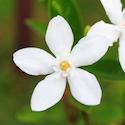Pests and diseases
These are all articles in the sub-category Pests and Diseases

Picture this: you step into your garden, eagerly anticipating the fragrant blossoms of your beloved jasmine plants. But instead, you find an army of tiny invaders wreaking havoc on your precious blooms!

As we have learnt from other posts, jasmine indoor plants, vines and shrubs are prone to get damaged by different bugs. However, most of jasmine species will be strong enough to withstand most of flying insects infestations.

You have been caring for your jasmine plant with so much love for such a long time and suddenly your plant starts looking stunt with its leaves all shriveled up? You have checked the underside and surface of those leaves and you have realized that they are plagued with little aphids insects! Well, bad news, aphids are a nasty pest and they suck! Quite literally, they are sap sucking insects and they will feed on mainly the sap and fluids of your jasmine plants (like for instance your precious night blooming or Star jasmines).

The Night blooming jasmine is one of the most beautiful, evergreen and everlasting jasmine species, that exist. Not only, due to its beautiful waxy flowers, but also, and foremost, due to the extravagant scent that its flowers produce. Unfortunately, not all is a roses path when it comes to care and maintain our night blooming jasmine, as it is really prone to get infested with nasty pests, such as, leaf eaters caterpillars, aphids and mites. There is no more heart breaking event as seen your gorgeous night blooming jasmine plant full of holes and gaps reaching the flower buds and stems. Every jasmine plant gardener has to eventually deal with some pesky pests, such as, caterpillars, that will collapse your plant in no time, if not checked or treated, but luckily, we have many options to deal with them. Caterpillars do feed on the leaves of our jasmine plant, starting with the younger and fresher leaves of the plant and making their way to the higher parts of the plant very quickly. As a result, most blossoms will not be able to bloom and even the buds will fall off before they get to bloom. That’s why, prevention and ensuring you check on your plants regularly, are the most effective ways to avoid these caterpillars to colonise your jasmine plants. It is important to note that they will be most active during the summer and autumn time and it is key to recognise the first sings of infestation by these insects to be able to act as quickly as possible. These sings include, double checking both sides of the leaves, to ensure there are no butterfly eggs attached to them, double checking for holes and gaps in your leaves and lastly to check the entire jasmine plant for caterpillar or moth poop, as this would be undoubtedly, the result of active caterpillar or moth egg laying process.

From indoor to outdoor gardens, one of the most common diseases that can spoil our summer thriving jasmines are fungi infections. Plant fungus is a common grief for all of us jasmine lovers, but don’t panic! as fungal diseases, although looking nasty, are not fatal to our jasmine plants. Below in this post, we will dive a bit deeper into the easy enough strategies to cope with these infections and treat them. Fungal infections primarily occur and develop in the leaves but some species also infect the flower buds and stems of the plant. Fungal pathogens are avid parasites, able to live for long periods of time in the soil, to then strike up on new plants and thriving during pruning periods to invade the plants.
